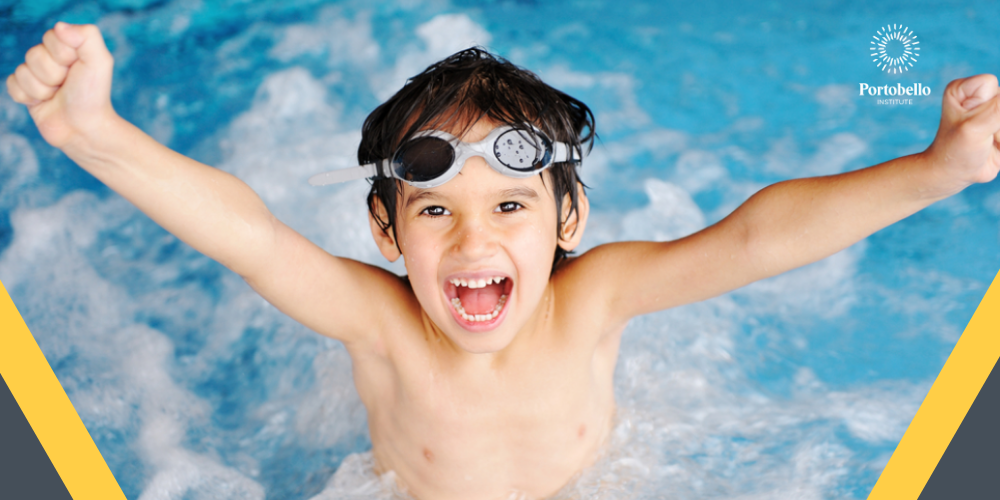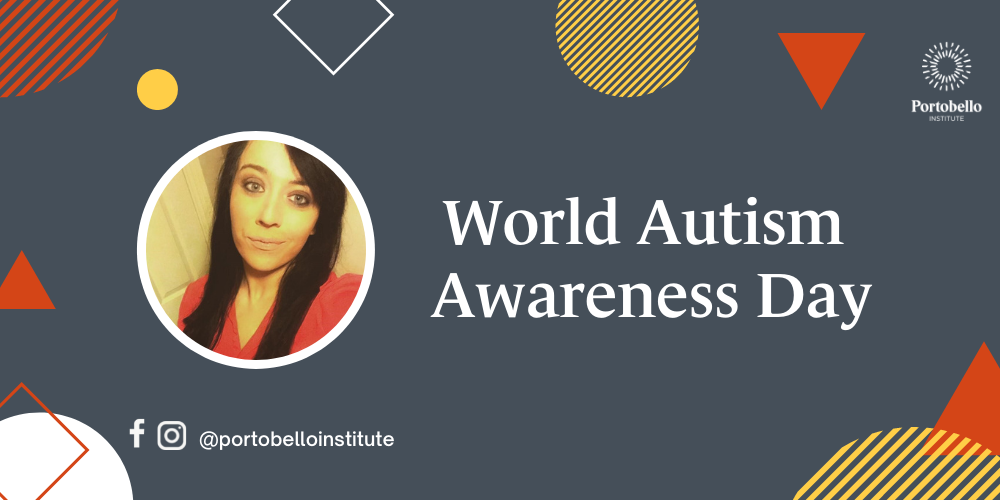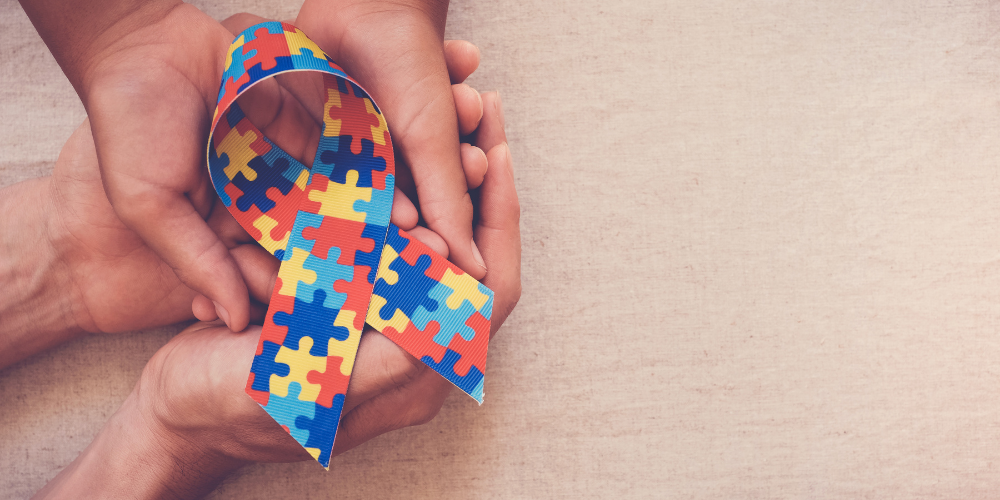

Portobello Institute was built to make education accessible for everyone. Our staff are all advocates of inclusivity because we believe that everyone can learn and thrive with the right support.
Children and adults with additional needs should not be deprived of the opportunity to enjoy sports and physical activity. They also should be able to grow and develop a career in sports and physical activity.
This article was written by Dr Susan Giblin, Degree Programme Coordinator and Lecturer at Portobello Institute.
Autism is a lifelong developmental disability that affects how a person communicates with and relates to other people. It affects how they make sense of the world around them.
It is a spectrum condition, which means that even though all people on the autism spectrum share certain similarities, their condition will affect them in different ways. For example, Asperger syndrome is a form of autism. People with Asperger syndrome are usually of average or above-average intelligence. They have fewer problems with speech but may still have differences when understanding and processing language.
Most people with Asperger syndrome don’t usually have the accompanying learning disabilities that are associated with autism. They may have specific learning difficulties such as dyslexia and dyspraxia.
Unfortunately, stigma, stereotyping, and mislabeling of people with Asperger syndrome can result in negative experiences in sports or PE classes. People with Asperger syndrome interpret the world around them differently but there’s no reason for the world to interpret them differently. Sporting talent comes in different forms. Autism doesn’t eradicate your ability to run or kick a ball.
There are plenty of world-class athletes in different sports who are on the autistic spectrum.
Jessica-Jane Applegate is a British swimmer with 24 gold medals in the Paralympics. She holds 11 British records and a world record for the 100-meter butterfly. Jessica was awarded a Member of the Order of the British Empire (MBE) for her contributions to swimming in 2013 despite being just 17 years of age at the time.
Just nine weeks prior to the 2016 Olympics in Rio De Janeiro, Applegate required career-saving throat surgery. She couldn’t train prior to the games but still managed to win two Silver medals and one Bronze.
Applegate’s successful career is a strong argument for supporting athletes who live with autism:
“Lack of understanding about what a learning disability means that things that everyone takes for granted are made impossible for people with a learning disability. But I’m proof that if you’ve got the right support, you can do anything and anything is possible.”
Clay Marzo is an American professional surfer known for his unique “double-jointed” style of turns and spins. At just 15 years of age in 2005, Marzo became the first surfer in NSSA history to receive two perfect 10s en route to winning the NSSA National Title. He became the NSSA Open Men’s National Champion before being diagnosed with Asperger’s syndrome in 2007.
His creativity and innovation at such a young age led to him being featured in several films, including Just Add Water, a 2008 romantic comedy that featured Jonah Hill, Danny DeVito and Melissa McCarthy.
Marzo later co-wrote a book on his life by the same name, “I hope the book will help other people who are similar to me. And if not them, then to their families so they can get a better understanding of what it can be like.”
John ‘Doomsday’ Howard is an American professional mixed martial artist. Howard has a 28-16-1 record and hasn’t fought professionally since 2016. He finished his career in the World Series of Fighting Organisation but spent most of his career in the UFC. He is one of the most experienced welterweights in the world and wasn’t diagnosed with Asperger's until he was 33.
His diagnosis only came about because he underwent a series of neurological tests that are required by seasoned fighters. His childhood was then discussed at which point Howard recalled difficulties in school, challenges with speech and challenges with building relationships. A clinical diagnosis of autism was made.
Howard considered that diagnosis a relief rather than an indictment, “Now a lot of stuff in my life makes sense. Now I'm thinking about my life, it makes sense why I do certain things. Even to this day.”
Division I basketball is the highest level of college basketball in America. It is the feeder system into the NBA and the next-best level after the NBA. Anthony Ianni became the first athlete with autism to play Division I basketball in 2010.
Ianni didn’t just play at that level. He played for Michigan State, one of the best programmes in the country, and for Tom Izzo, a legendary college basketball coach. He won two Big Ten Championships and one Big Ten Tournament and was a 2010 Final Four team member. He won the 2011 Tim Bograkos Walk-On Award and the 2012 Unsung Player Award.
Notably, Ianni was diagnosed with Pervasive Development Disorder (PDD) before ever playing basketball. He was just four years of age when he learned he was on the spectrum for autism and it didn’t prevent him from reaching the highest level of college basketball.
David Campion is a dual-sport athlete, competing in basketball during the summer and snowboarding during the winter. Campion excels in both sports but has explained previously that he is more comfortable in snowboarding because it is an individual sport. Working with his teammates in basketball can be stressful for him on occasion.
He has represented Australia at the Special Olympics World Games in snowboarding more than once. In both sports, Campion values the structured practices and feeling of support that make him feel comfortable and accepted as an athlete.
Research demonstrates that there are substantial health benefits of physical activity, especially moderate to vigorous activity, for people with autism. Several studies suggest it’s especially beneficial to children with autism spectrum disorders, including improved physiological, cognitive, psychological and behavioural functioning (Lang et al., 2010).
The strongest evidence supports benefits related to motor development and decreases in repetitive, stereotyped and self-injurious behaviours (Ferreira et al., 2019). Sport also provides the perfect backdrop to teach young people with autism about rules, strategy and teamwork (Sowa and Meulenbroek, 2012).
Sport and physical activities may be challenging due to the loud, chaotic environments or exclusion from participation. The Special Olympics and Unified Sports are programs specifically created to include athletes of all ages and abilities in team and individual sports.
Physical boundaries are important to understand when working with individuals with autism in sports and physical activity. The rules of physical boundaries between people in certain physical activity situations change depending on factors such as the closeness of your relationship, the size of the area and the type of the activity.
It can be difficult for a person with autism to navigate these complex rules and work out how close or far away to stand from other people (Yanardag et al., 2010). In addition to physical boundaries, language interpretation should be considered, especially for coaches. The language used in daily conversation often contains a number of metaphors and ambiguous phrases.
The language used in sports sessions such as ‘pull your socks up’ or ‘run like the wind’ may confuse people with autism. Some people with autism can interpret language literally and find it hard to infer meaning based on context. This can make it hard to follow conversations or understand instructions.
Hypothetical thinking can be a challenge as well. Many coaches require participants to think hypothetically or visualize success. For example, a coach might ask “What can you do differently next time?” or “What is the best position to get yourself in for the next phase of play?” That’s not always a straightforward question for people who live with autism.
Dr Susan Giblin is the Head of Strategy for Sport and Health at Portobello Institute. She holds a BSc in Health and Performance Science (UCD), PGDiploma General Psychology (University of Derby), an MSc in Performance Psychology (University of Edinburgh), a PhD Psychomotor Development (University of Central Lancashire), and a Post-doctoral fellowship – in Psychomotor assessment validation (University of Central Lancashire).
If you are interested in any of our sports courses or have any questions you can book a consultation call with our expert sports advisor Jason Lester, email jason.lester@portobelloinstitute.com or call 01 892 0029.
Join our mailing list to receive the latest insights and exclusive content from your chosen department of interest
© 2020 Portobello Institute | Powered by Wurkhouse



